
Born in Kosovo, Blerta Zeqiri survived the Balkans Wars of the 1990s to grow into a bold and sophisticated film director.
Her various short films have earned her acclaim around the globe, including the Sundance International Short Fiction award, which set her on the road to directing her first feature.
Now comes The Marriage, Zeqiri’s full-length debut, which tackles a still taboo subject in her native land: gay love.
The Marriage already earned rave reviews in Kosovo, where the film outsold American titles like Avengers: Infinity War, a feat all the more amazing considering that homosexuality remains a criminal act in the nation. Now the nation has submitted the film for the Best Foreign Language Oscar, and Zeqiri looks bound for a successful career as director.
How about we take this to the next level?
Our newsletter is like a refreshing cocktail (or mocktail) of LGBTQ+ entertainment and pop culture, served up with a side of eye-candy.
The Marriage arrives in the USA on streaming services December 7. We caught up with Zeqiri to talk about her new movie, the subject matter, and the role of the artist in healing the world.
This is your first feature film. What fears did you have about directing a feature as a first time director, especially one dealing with such an incendiary subject?
Art is supposed to instigate debate on important issues. It should challenge conventional thinking – question what was until that point considered a universal truth by most. But, at the same time, I’m not a kind of a filmmaker looking for shock effects or sensationalism. Having said that, opening any kind of a debate on a topic through film is always a good thing. But, in this case, I had to be extra careful for the film not to give power to homophobes to take over the conversation. As a filmmaker, I also want to control the discourse a bit, not only instigate it.
In terms of the storytelling and this being my first feature, the biggest challenge in making the transition from shorts to features was engaging the audience for such a long time. In short films, it’s comparatively easy to engage the audience attention for 20 or 30 minutes, so I was afraid that I could not make an interesting film that lasts more than an hour.

Homosexuality is still very stigmatized in Eastern Europe. When you decided to make this film, how much resistance did you encounter?
I think homosexuality is still very stigmatized throughout the world, not only in Eastern Europe. There are cities in the US or Western Europe that are very open in this aspect, but I see them as exceptions and not the rule. In general, I still think we have a long way to go. Just look at athletes. In the US, for example, I understand there is only one openly gay active male athlete in major pro sports leagues. I find it hard to believe all other athletes are straight.
[Laughter]
Unfortunately, it’s the same with Europe, too.
In Eastern Europe, the stigmatization is even bigger and spread even more. We don’t even have cities where gays and other LGBTQ people can express their sexuality freely. Kosovo is even more closed and more conservative as a society. Or, at least, this is what we thought. Let me explain.
Please do.
When we started thinking about the film, we were afraid there might be repercussions from the radical groups in our society. As, for example, with a panel discussion on sex organized by a magazine called Kosovo 2.0 a few years ago, when extremist groups stormed the public discussion venue and demolished the premises, followed by attacks on gay activists and their offices in the city.
Related: Is ‘A Moment in the Reeds’ the Finnish ‘Brokeback Mountain’?
After these attacks, the international organizations in Kosovo, together with our government mobilized to protect the LGBTQ rights more. So, since then, we had two gay parades without incidents and our film’s theatrical release garnered no negative attention or hate speech, although it became the most popular Kosovo release, beating US blockbusters in its opening week and was the most talked about film in our country for a while. So, before we released the film, we thought the people would be prejudiced toward our subject matter. We thought, they would be incensed there is a gay sex scene in it and so on. But what happened was, it was us who turned out to be prejudiced toward our people, thinking all hell is going to break loose, when it just didn’t. There were occasions, we heard, almost in every screening of our film, throughout the five weeks it was showing in cinemas, that a handful of people left the theater during or right after the gay sex scene, but still, no one from the film crew received any hate mail.
How did you find the leading actors? Were they nervous about playing gay characters, or in the case of Adriana Matoshi, appearing in a film about a gay romance?
The three leads were part of the film when we only had a synopsis when we didn’t have a first draft of the script yet. I brought them in so early in the process, because I wanted to make them part of the creative process, too. In my last short film, I tried to let actors improvise the dialogue completely and I loved the result – the hyperrealism that can come from that, so in my feature, I knew it couldn’t be all improvised, partly because it was my first feature and I had to have some control over the end result and partly because it’s almost impossible to get funding on a synopsis. This is why the leads were part of the writing process from the very first draft. We wrote a draft of the script with my co-writer and then we invited them to stage it and improvise on it. This back and forth with the actors went on for about three years before we were confident enough in the script to start shooting.

Because of this, I needed my actors not only to be free of any prejudice toward the queer community but also be really talented, creative and fearless explorers of their inner selves. The pool was therefore very limited, so I was very happy that they accepted the roles immediately and were in it with all their hearts, without a doubt or holding themselves back because of fear of any repercussions. We all wanted the same thing: to challenge society.
The three main actors were very famous and loveable in Kosovo and I believe this helped the audience fall in love with them more easily. Another important fact to mention is that I didn’t limit myself to casting only professional actors. That is why I ended up choosing Genc Salihu for the role of the lover [Nol]. Genc is a very famous Kosovar musician who was a judge in The Voice of Albania. It was his acting debut and I think he did pretty amazing.
Adriana Matoshi was no different. She is the best actress we have in our country and took on the challenge very professionally.
One interesting element of the film is how for the first half we think it’s going to be more of Anita’s story. Then slowly we begin to realize that the film is actually the love story between Nol and Bekim.
Striking a balance between the main three characters was a huge challenge. I wanted Anita to be a big part of the story. There were a few reasons for this. Firstly, I wanted to portray how a relationship, before a marriage is seen from the outside and then delve under the surface and see what is really the story behind it. Secondly, I wanted to show another side of the damage that living in a closed society brings. Forbidding gay love doesn’t just bring suffering to the LGBTQ community, but has its other casualties, its “collateral damage” – Anita in this case, like many women in highly patriarchal and conservative societies. Lastly, I needed to make the characters all as equally lovable as possible. This was, as is always the case because I wanted the audience to feel for them, but, as much as I hate to admit, it was also out of fear of doing more damage than good to the cause. I was afraid that if we focused more on Anita and her hurt, I might have given homophobes even more reasons to hate gays, especially since it was the first ever queer live-action feature in our country. So, regardless of the risk of it being seen as a weakness of the film, we deliberately left out Anita from the closing parts of the film, because every time we were bringing her back, we were not able to root completely for Bekim and Nol’s love, because it would bring in our minds the suffering this love causes to Anita.
What kind of feeling do you like to establish on your set to help the actors prepare for a scene? Needless to say, there are some very difficult emotional scenes in the film. How do you find the realism?
Since I was working with actors from the writing phase and we sort of built the characters together, it was a lot easier to work on set with them. During the scriptwriting improvisation sessions, we learned how to work with each other, so this part was easy. Nevertheless, I wanted them to be able to show some raw emotions and in order to help them find these emotions, I need the set to have the right energy so that the actors can find their emotions faster. For example, during some delicate emotional scenes, I asked for the smallest crew possible, and the ones that stayed on set had to be super quiet so that we allow the actors focus.

Sometimes I would even do the clapperboard and be script supervisor, only so that I wouldn’t have other people on set that could disturb the energy flow that I needed. I always want the actors to be able to live through their emotions and that’s why sometimes I don’t even like to say “action” on set because I feel that can put them in “acting mode,” especially when we are shooting difficult emotional scenes. And what I’m looking for are raw feelings. That’s why even though we have gone through a lot of rehearsals with them earlier, I still want the actors to feel free during the shooting so that if for any reason they feel the need to say or do something at a certain moment, they should be able to do it. Giving creative freedom to all my crew is very important to me because I feel that the result is much better when more minds and hearts are involved in the creative process.
Did you encounter other resistance from crew or cast that were hesitant to work on the movie, or from filming locations? I know in the United States a lot of directors I’ve talked to have been denied permission to film in certain locations because of the film’s subject matter.
Every person that was involved in the film knew what the film was about and agreed to be a part of it. But still we were very careful and we didn’t even want to give someone a chance to resist or complain afterward for being a part of the film. That’s why for some more delicate scenes, like the lovemaking scenes, I used my own apartment. Zana’s children, for instance, were played by my own children Zog and Nata, because this way I was sure that no one will come after and say they didn’t want their child to be a part of this film. We were very cautious.

Were they ever threatened by having a female director? I know gender roles are also much more strict for women in that part of the world.
In my case, working with actors wasn’t particularly hard, as they were people I knew well and the fact that I won Sundance with my previous short film in 2012 I think helped immensely.
But I must say that in Kosovo, we have a very unique situation, because, for different reasons, the most prominent film directors are women. Their films are being awarded in major film festivals and therefore we don’t encounter that much of a struggle/resistance from our collaborators as we used to before. Actually, a few years now, we are respected for the filmmaker behind and the gender is not an issue anymore.
That’s wonderful.
Most of our films here are financed by the state, and up to 50% of the budget goes for women filmmakers and that is not because of an imposed quota, but because there is no more discrimination on this matter.

What hope do you have for the effects of this film on perceptions of LGBTQ people in Kosovo?
There are a few organizations that specialize in queer rights, but they keep a somewhat low profile. The last couple of years, they have become more visible and, as I said before, they organized two small, but very public and very successful pride marches.
For my film, I hoped it would help the Kosovo public see queer love how it is – just love without any adjective. And hearing unsolicited comments from so many viewers after seeing the film that they saw Bekim’s and Nol’s love as “pure love,” without gender made me very happy.
Ultimately, the selection of The Marriage as our country’s official entry for the Best Foreign Language Oscar race is, I like to think, a confirmation that the film struck a chord with the public and changed the way LGBTQ issues are seen by many.
What’s next for you?
I’m working on my next project, a coming of age film situated in wartime ex-Yugoslavia. It’s a musical about a friendship/platonic love between a wannabe girl rapper and a wannabe gangster in a small town of Kosovo.
It’s somehow semi-autobiographical.
The Marriage streams on Revry December 7 on Amazon, iTunes, YouTube & VUDU.



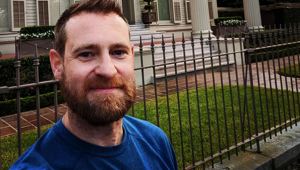
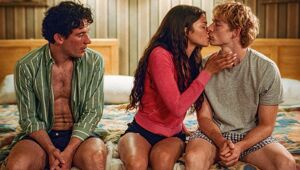




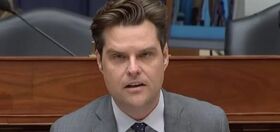






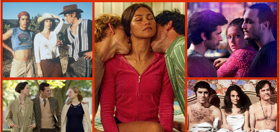

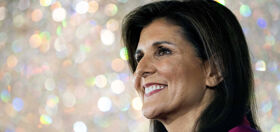
ingyaom
I’m interested in this fil, but that “preview” was totally inadequate.
nitejonboy
Wow, that trailer is hideous, it doesn’t explain anything about the movie at all…and this is an Oscar contender ? The movie better be good, cause the trailer sucks ass.